A big thanks to Dave over at Counter Steer for putting a link up to here. Dave is trying to force a change in Victorian motorcycle politics. The Victorian Motorcycle Riders Association (MRA Vic) has been around for a couple of decades and at the moment could probably be best described as disfuntional and is in serious need of overhaul (or euthenasing). MRA Vic, to the outsider, looks riven with numerous internal squabbles and divisions, threats and violence.
This isn't something unique to motorcycle politics, having been involved with numerous Landcare and other environmental groups over the years I have seen it on many occassions, the executive gets dominated by a few people whose agendas don't always reflect the views of the grassroots membership and often fall to the lure of "playing with the big boys". I've seen it with developers, they're quite happy to have their tame community group they ocassionally throw a few scraps and proclaim "look at us, we're working with the community" while continuing to do pretty much as they please, government departments like the same thing, "community reference groups" are often formed, given tea and bickies and sent on there way happy they've been listened to. MRA Vic seems to have fallen into this as well, quiet diplomacy, we have the ministers ear, working at the coal face, they seem to have become part of the system they started up to change.
Good luck with it Dave, it won't be an easy task.
Monday, July 28, 2008
Friday, July 18, 2008
Fun with Biofuels
There's two types of people in the world, those that understand maths and those that don't. Those that don't tend to think biofuels will save us and those that do, don't.
Ok we'll run some very simple calculations just to get an idea of just how much biofuel we'd need to replace the fossil fuels we're using in our vehicle fleets. To do this we'll make a few assumptions (I probably could look it all up but ballpark "guesstimates" should give us a reasonable estimate), we'll assume an average fuel consumption of 10l/100km, 20 000km of use per vehicle per year and 10 million vehicles in Australia and we'll treat it as all fossil fuels being replaced with ethanol just for sake of convenience, we're also assuming the same fuel economy from ethanol as from the fossil fuels (which it isn't, ethanol gives less km/l). So:
Fuel used per vehicle = 10/100 x 20 000 which is 2000l/yr
Now one tonne of grain makes about 650 litres of ethanol so 2000/650 gives just over 3 tonne of grain per vehicle to run for the full year which means we'd need to convert around 30 million tonnes of grain to biofuels per year, which unfortunatelly is roughly what we grow per year. In 2006-07 grain production dropped to below 20 million tonnes meaning we'd probably have to dip into the 5 million tonnes of sugar we produce per year.
So do you want to eat or drive?
Ok we'll run some very simple calculations just to get an idea of just how much biofuel we'd need to replace the fossil fuels we're using in our vehicle fleets. To do this we'll make a few assumptions (I probably could look it all up but ballpark "guesstimates" should give us a reasonable estimate), we'll assume an average fuel consumption of 10l/100km, 20 000km of use per vehicle per year and 10 million vehicles in Australia and we'll treat it as all fossil fuels being replaced with ethanol just for sake of convenience, we're also assuming the same fuel economy from ethanol as from the fossil fuels (which it isn't, ethanol gives less km/l). So:
Fuel used per vehicle = 10/100 x 20 000 which is 2000l/yr
Now one tonne of grain makes about 650 litres of ethanol so 2000/650 gives just over 3 tonne of grain per vehicle to run for the full year which means we'd need to convert around 30 million tonnes of grain to biofuels per year, which unfortunatelly is roughly what we grow per year. In 2006-07 grain production dropped to below 20 million tonnes meaning we'd probably have to dip into the 5 million tonnes of sugar we produce per year.
So do you want to eat or drive?
Friday, July 4, 2008
Test your powers of observation
Now here's a little something for you, look at the following pictures and see what you can find, read the landscape and figure out what it's telling you.
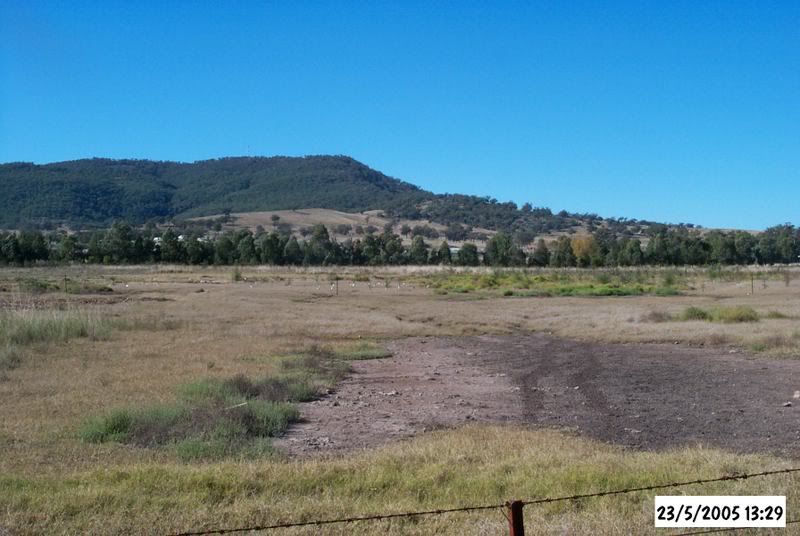
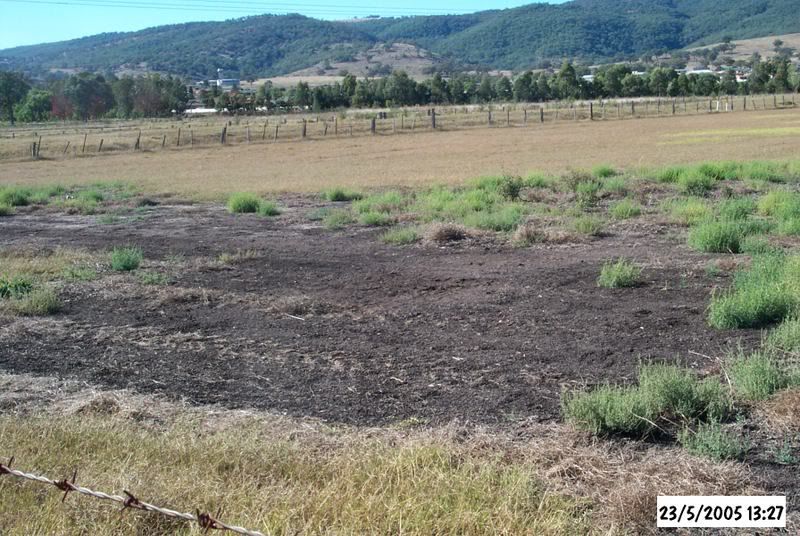
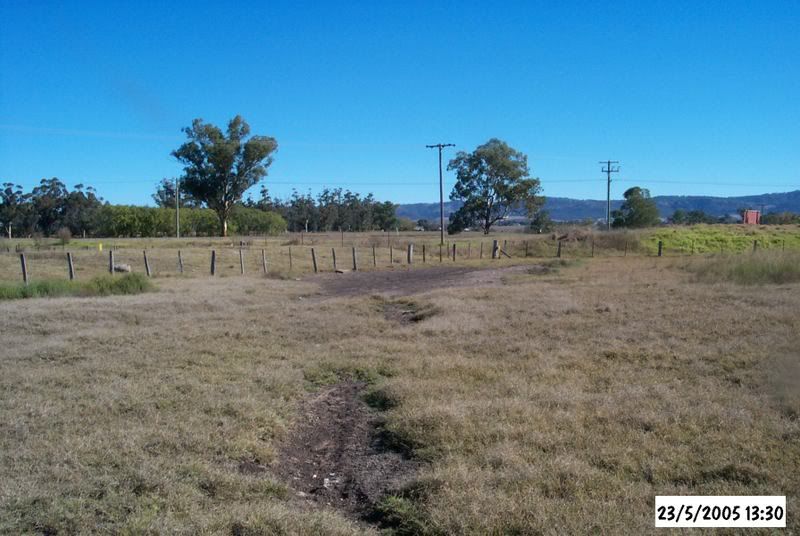
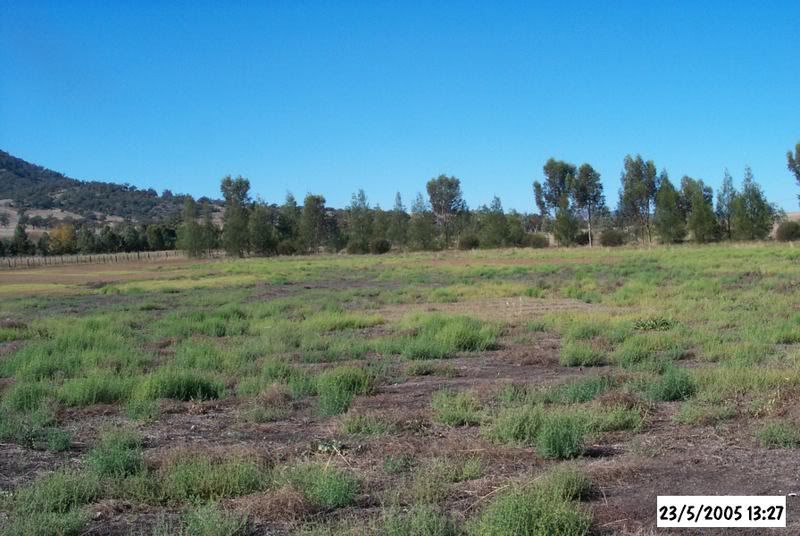
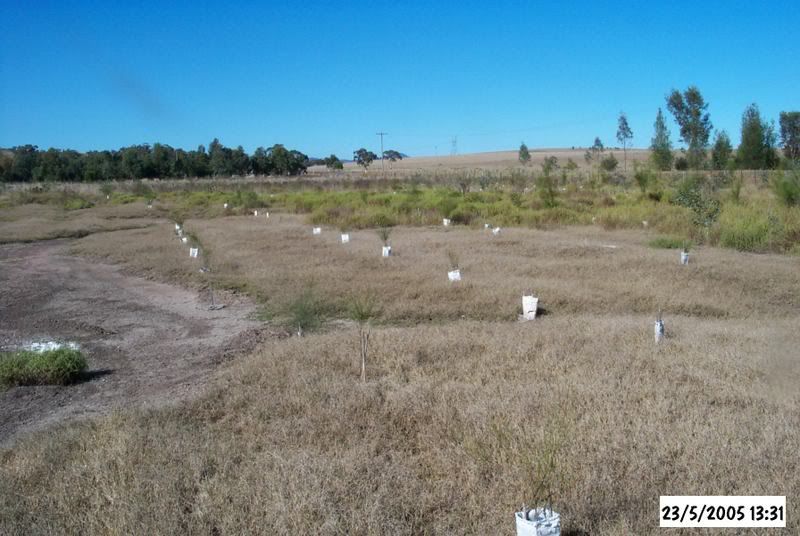 How did you go? Bare patches of ground, low in the landscape, obviously got a few problems and if you look closely you can see little patches of white, telltale signs that there's a salt problem there. Now a couple more pics.
How did you go? Bare patches of ground, low in the landscape, obviously got a few problems and if you look closely you can see little patches of white, telltale signs that there's a salt problem there. Now a couple more pics.
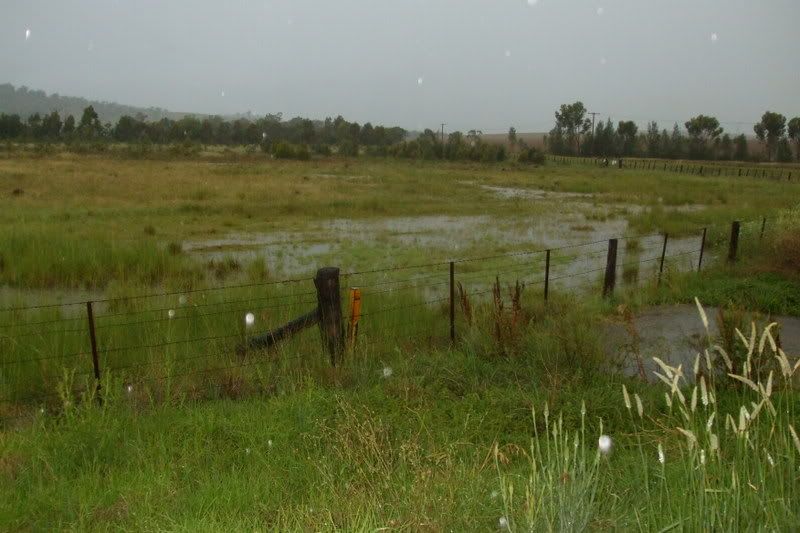

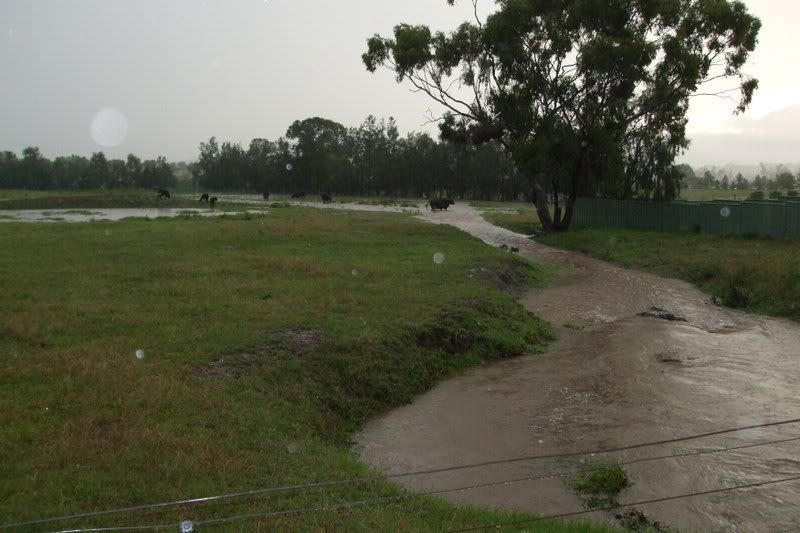 And as you'd expect for a low lying site half surrounded by urban development it's prone to flooding.
And as you'd expect for a low lying site half surrounded by urban development it's prone to flooding.
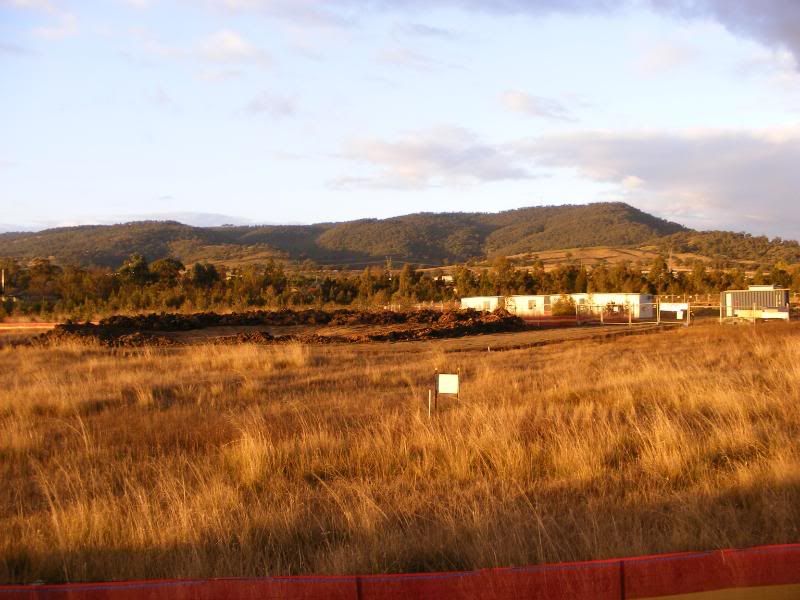
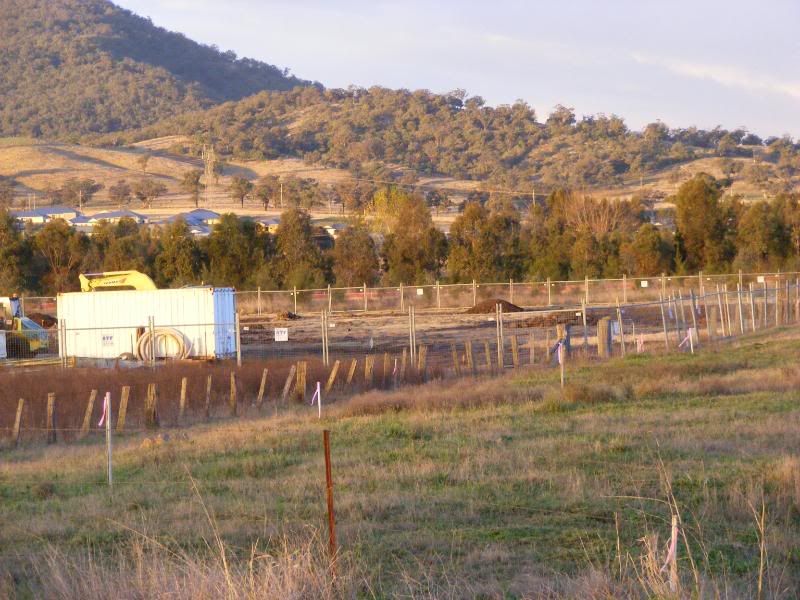
"act prudently where environmental risks are uncertain and consequences serious;"
"assess, adequately manage and endeavour to minimise the impacts of activities we propose to carry out;"




 How did you go? Bare patches of ground, low in the landscape, obviously got a few problems and if you look closely you can see little patches of white, telltale signs that there's a salt problem there. Now a couple more pics.
How did you go? Bare patches of ground, low in the landscape, obviously got a few problems and if you look closely you can see little patches of white, telltale signs that there's a salt problem there. Now a couple more pics.

 And as you'd expect for a low lying site half surrounded by urban development it's prone to flooding.
And as you'd expect for a low lying site half surrounded by urban development it's prone to flooding.Ok you ask so what am I getting at? Well here's the question knowing it was a low lying saline area prone to flooding what would you do with it? If you were smart, like Scone Landcare, you'd plant the site up with salt tolerant species to suck up the excess water, drop the watertable and get some vegetation coverage happening, which they did. The rehabilitation work was very successful, not only were the trees growing and water table dropping but native grasses were starting to recolonise bare salt scalds.
You certainly wouldn't want to whack a development on there, bulldozing a few hundred established trees, putting constrictions on a floodplain that could result in backing up of water and potentially exascerbating a salinity problem.
You wouldn't would you?
Guess what?


Energy Australia in it's infinite wisdom is constructing a power substation on the site. No I shit you not! Despite advice from government agencies that the site wasn't appropriate Energy Australia, as a state government entity, decided to self assess under Part 5 of the Environmental Planning and Assessment Act. The 300 odd page REF (well I can't remember exactly how big it was but it was big and I'd hate for it to fall on me) was quite impressive, especially for a development covering an area of a hectare. Now it's probably just my cynicism but I tend to distrust big documents for small developments, plenty of room to hide things. But as I said probably just me being cynical after all Energy Australia does have an Environmental Policy which states they will strive to:
"act prudently where environmental risks are uncertain and consequences serious;"
and
"assess, adequately manage and endeavour to minimise the impacts of activities we propose to carry out;"
I'm glad of all that!
The other big issue is that a growing town like Scone will need new areas of land opened up for residential and light industrial land. The obvious spots being on the edge of town including land above the site of the substation which without good planning and management will likely result in increased runoff and extra flooding of the substation site. Lucky there's a big REF we can use to mop up the water.
Subscribe to:
Posts (Atom)